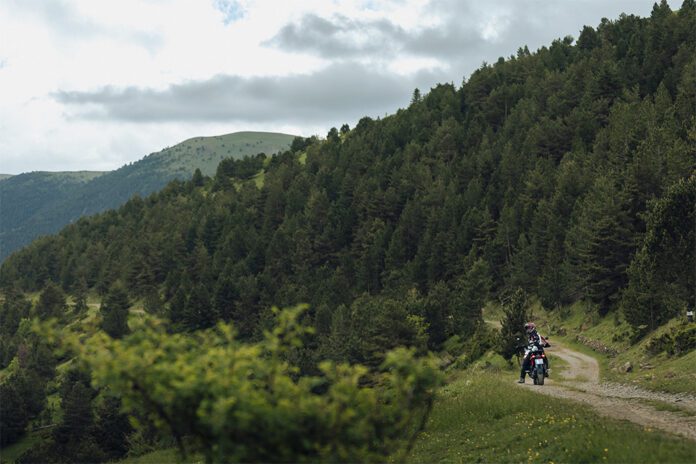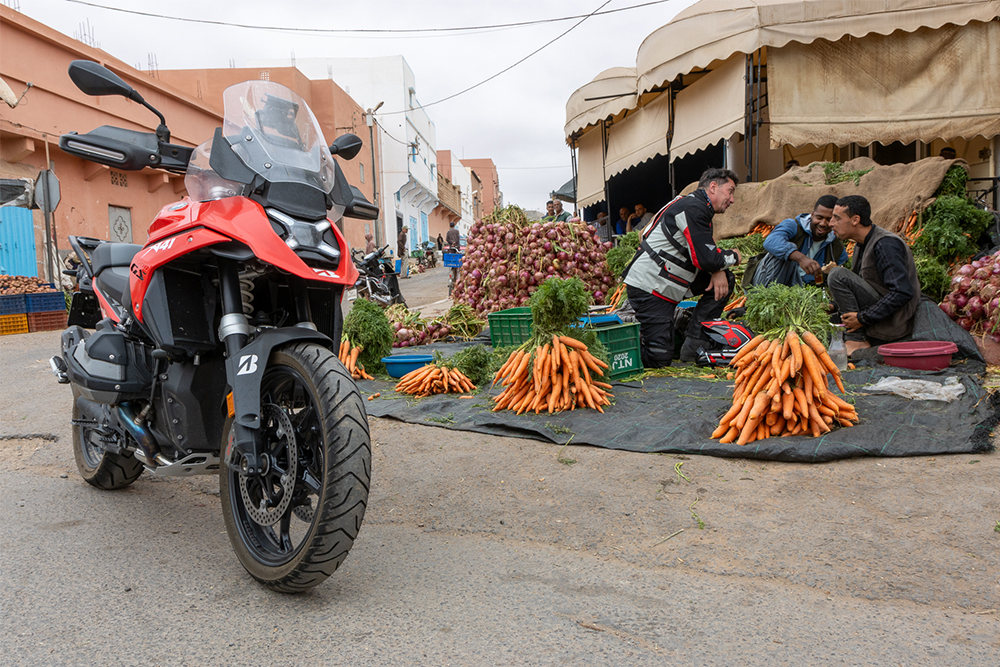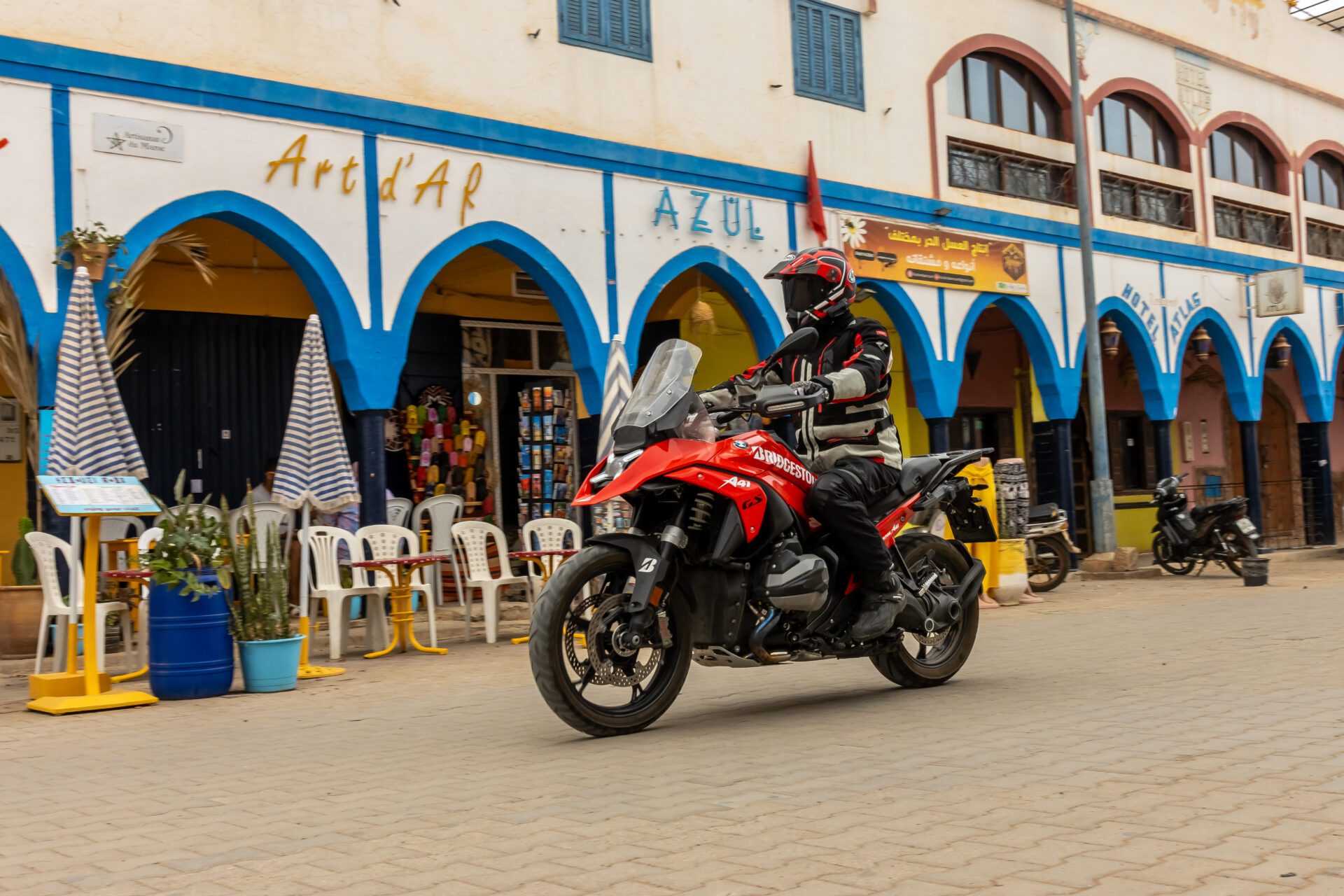Paris-Dakar on the Bridgestone A41’s
Part 1: Into Africa
A man’s gotta do what a man’s gotta do. After we did 15 countries in one day with the Kawasaki Versys 1000 SE last year and set a world record, things got a bit quiet. So, why not ride to Dakar? But not using a rally bike or an enduro. How about riding to the iconic city at Africa’s West Cape on the most popular adventure bike in the world: BMW’s R 1300 GS?
Dakar is the dream destination for many adventure motorcyclists. Those who venture on this adventure, usually choose an extreme off road adventure bike. But is that really the best choice? Doesn’t the comfort of a more asphalt-oriented bike sound just as appealing? And can you ride a road bike to the finish line of the greatest of all rallies? By taking the BMW to Dakar, we tried to find an answer to those questions. And to make things a bit more exciting, we chose Bridgestone’s versatile A41 tyre, the most road-oriented tyre in Bridgestone’s adventure line up and a very popular choice on all BMW’s GS-models.
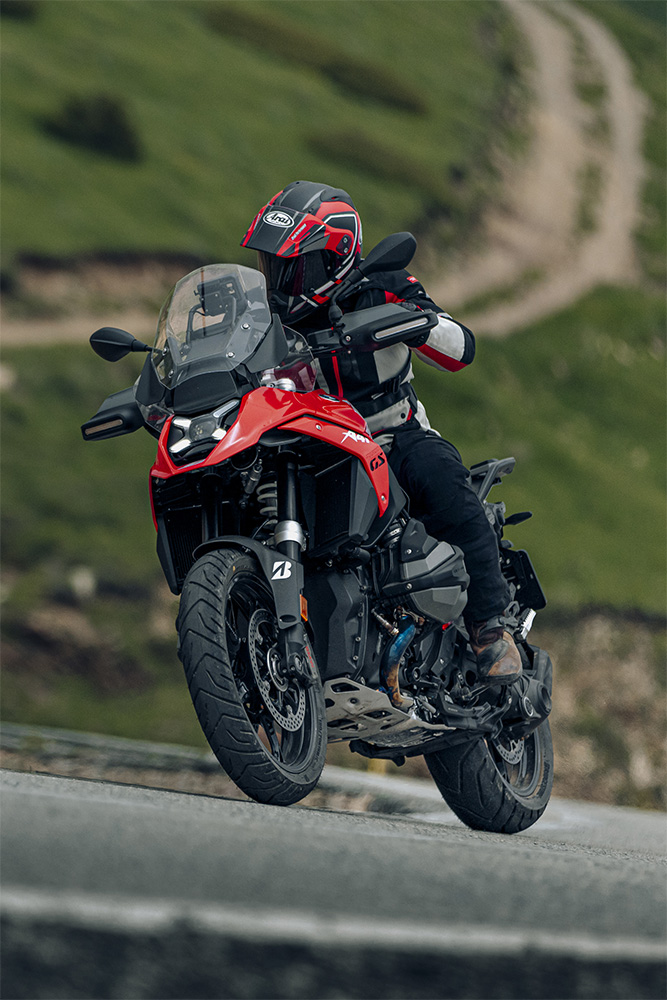
European warm-up
There was no doubt that the big challenge of the trip would not be the first part. Without too much effort or hurry, we made it from Paris to Tarifa in three days. With a nice warm-up on the gravel roads near Andorra, as a first test for the BMW and immediately a confirmation of what we suspected earlier: the R 1300 GS can handle its fair bit of dirt. With the road-oriented Bridgestone A41 tyres hard and rocky gravel roads were the obvious choice. The low center of gravity of the Beemer and its geometry that also allows you to stand up without having to run to the physical therapist at night, offer not only the necessary control and the much-needed self-confidence.
The latter comes in handy when going into Africa. Border checks are always a time-consuming game, but fortunately the only thing we lost was time and not money. No tips, no euros in passports: if there is still corruption at the borders, there was no sign of it at the Moroccan frontier. Great!

Choosing the route
For many would-be Dakar riders, the level of the chosen route is key. But hey, it is what it is: namely, Africa. So, in every road there’s a certain level of challenge. But in the end, you always have a choice between different routes and options. It may never be easy, but it’s always achievable.
The absolute minimum of problems we encountered is proof of that. The first part in Africa is also the least challenging. Now, labeling crossing the mighty Atlas Mountains as ‘a warm-up’ is like dismissing running a marathon as a light workout. The weather in the mighty Atlas Mountains can be very erratic, wind is always a factor, temperatures can get both very high and very low, and the slopes are technically challenging.
Now while crossing the Atlas, we found that riding the slopes wasn’t all that hard, if there was no loose sand involved. Luckily, our off-road trails in the Atlas were hard pack or gravel. We had two days of breathtaking views and great trails. After crossing the Atlas, we headed for Ouarzazate and then continued to Zagora and Iriki National Park to finally arrive in the great city of Agadir. On this part of the trip, we had more rocks under the wheels than one would think is possible. But, lucky us, only the occasional strip of loose sand. On these parts, we dropped the tyre pressure just a little bit and that made all the difference.
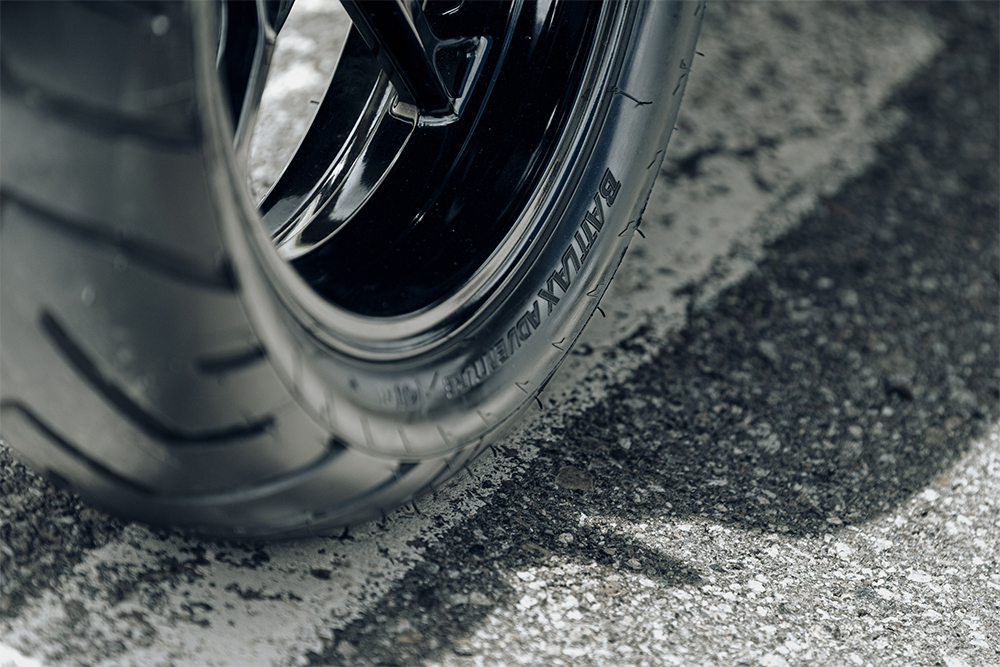
One might suggest that mounting off road tyres like the AX41 is an even better option. But the idea of this ride was to demonstrate that with a road-oriented bike and standard tyres you can take on this type of adventure. And whatever route you choose there will always be a stretch of asphalt. And that is where you might run into other problems with knobby tyres. Grip, comfort and wear become important factors. Looking back, the chosen set up with the A41’s was the best for the route we had in mind.
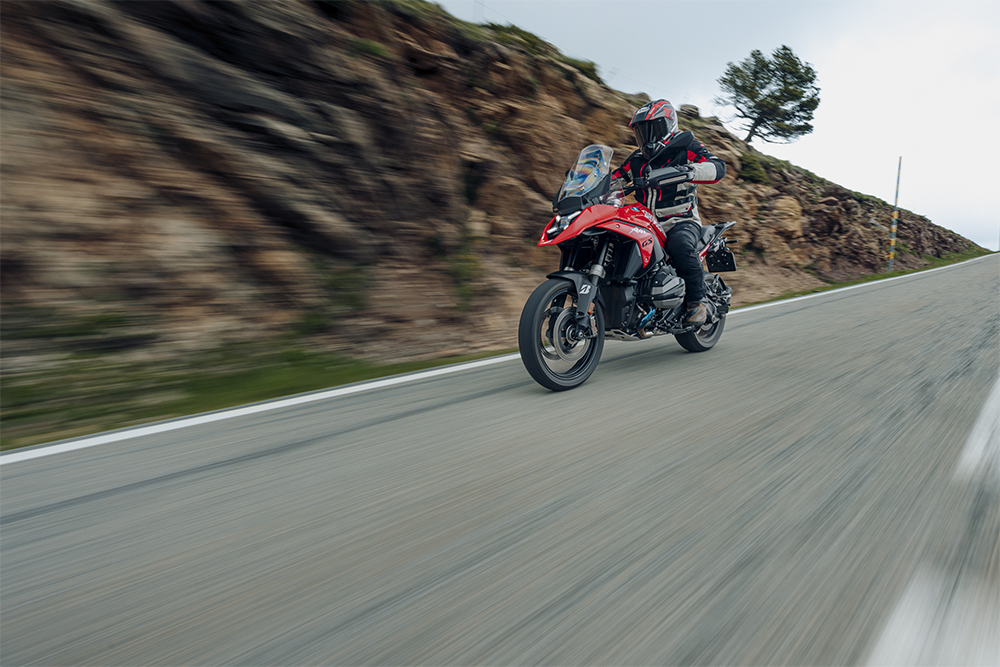
Easy trails?
It only added to some parts of the challenge, and one could expect that with this bike and these tyres, we would choose the easy trails… at best. Well, there aren’t many easy trails in Africa. The temperature, condition of the trails and unexpected obstacles make every slope a challenge. Even if you ride a pure off-road bike, you’ll still have to consider the limitations of your bike. Only a 450 enduro with rally kit does not limit you in the slopes you can handle. But then again, you won’t ride 7,000 km on that type of bike without a sore lower back, neck pain and ten sets of tyres. So yes, we were totally at the other end of that spectrum. With still quite a bit of comfort on the concrete roads and the benefits of riding a very versatile bike.

Watch out
The real challenge in riding in Africa is rarely the difficulty of the chosen trail. Somehow always get through. The big danger lies in the unexpected obstacles. And so being too confident is always your worst enemy. Thinking that you have done this before and can handle anything, is a guarantee for trouble. We got proof of that crossing the Atlas. Departing from Beni Mellal, we drove across the Moroccan mountains toward Ouarzazate. What looked like a trail on our GPS, turned out to be a recently asphalted road that could stand comparison with a racetrack. And we road accordingly…hard on the gas after every corner and using the amazing grip of the A41’s. We had a ball! Until…around a corner the lovely asphalt just turned back into a gravel trail. Getting on gravel under angle…not a good idea.
But with the right reflexes and a fair amount of luck we kept it on two wheels. It turned out that in this area, new roads had been built after last year’s earthquake. The problem is that… the road works are not finished everywhere. As was the case here. This was a reminder to never drop our focus and always stay vigilant. After this, we enjoyed three hours on a route that alternated between new asphalt and old trails. As Emmylou Harris said: it goes to show you never can tell…

Rough Riders
Once you cross the Atlas, the rough work begins. Ouarzazate and Zagora are the gateways to the desert, so this is where you get the higher temperatures, endless slopes and breathtaking scenery. For those who love the desert, it doesn’t get better than this. On these trails and roads, everything seems to be the same and yet… every kilometer is different. While along the Moroccan coast you sometimes encounter the same type of tourists as, say, in Spain or Greece, here you only see locals or visitors of the more adventurous kind. And so was the camel that decided to cross the slope 10 meters before we came blasting through…

Meanwhile, it was clear that the BMW can handle this work. Ok, it will never be a competitor to the rally bikes, but then again, we weren’t riding a rally. The tracks may have been rough and bumpy, but there was very little loose sand. This was easier than we expected. Then on the asphalt sections, the touring qualities surfaced. Great engine, smooth quickshifter and the right geometry. This also proved very useful on a 7000 km ride to Dakar.
After Zagora we rode through the Iriki National Park. This area has a gigantic dried-up lake. Impressive. Two days later, we finally reached the ocean near Agadir. We picked the lively city for the first and only resting day of the trip. It’s safe to call Agadir the Las Vegas of Morocco. So, it’s no surprise we started the second part of the trip more tired than we arrived. More on the ride between Agadir and Dakar in part two of this story. Stay tuned!


